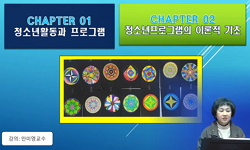The purpose of this study was to identify the relation between heavy metal exposure and the life styles and dietary habits in youth. This study is based on the data of the 2nd Korean National Environmental Health Survey which had been conducted from 2...
http://chineseinput.net/에서 pinyin(병음)방식으로 중국어를 변환할 수 있습니다.
변환된 중국어를 복사하여 사용하시면 됩니다.
- 中文 을 입력하시려면 zhongwen을 입력하시고 space를누르시면됩니다.
- 北京 을 입력하시려면 beijing을 입력하시고 space를 누르시면 됩니다.
https://www.riss.kr/link?id=A103460772
- 저자
- 발행기관
- 학술지명
- 권호사항
-
발행연도
2017
-
작성언어
English
- 주제어
-
KDC
517.405
-
등재정보
KCI등재
-
자료형태
학술저널
- 발행기관 URL
-
수록면
508-516(9쪽)
- 제공처
-
0
상세조회 -
0
다운로드
부가정보
다국어 초록 (Multilingual Abstract)
The purpose of this study was to identify the relation between heavy metal exposure and the life styles and dietary habits in youth. This study is based on the data of the 2nd Korean National Environmental Health Survey which had been conducted from 2012 to 2014. Finally 6,478 participants who were older than 19 years of age living at home were recruited. This study subjects were restricted to 19-24 years old participants. Finally, samples from 251 individuals were included for analysis. Statistical analyses were performed by SPSS/Win 19.0 using complex sample design. As a results, the influential factors of blood lead concentration were found to be sex and age in the category of general characteristics; use of public transportation, smoking, and doing exercise in the category of life styles; an intake count of canned food products of processed products in the category of dietary habits. These results will be useful to develop an intervention program to reduce youth’s exposure to heavy metals in their everyday life.
목차 (Table of Contents)
- Abstract
- 1. Introduction
- 2. Methods
- 3. Results
- 4. Discussion
- Abstract
- 1. Introduction
- 2. Methods
- 3. Results
- 4. Discussion
- 5. Conclusion
- REFERENCES
동일학술지(권/호) 다른 논문
-
A Study on the Energy Consumption of Energy Poverty Households
- 한국생활환경학회
- Kang-Guk Lee
- 2017
- KCI등재
-
- 한국생활환경학회
- Hyung-Sook Kang
- 2017
- KCI등재
-
Relation between Overall Health Status and Environmental Satisfaction of Community Elders
- 한국생활환경학회
- Seonhye Lee
- 2017
- KCI등재
-
Sound Absorption Performance Analysis According to Existence and Shape of the Road Noise Barrier
- 한국생활환경학회
- Ah Yong Shin
- 2017
- KCI등재





 DBpia
DBpia






